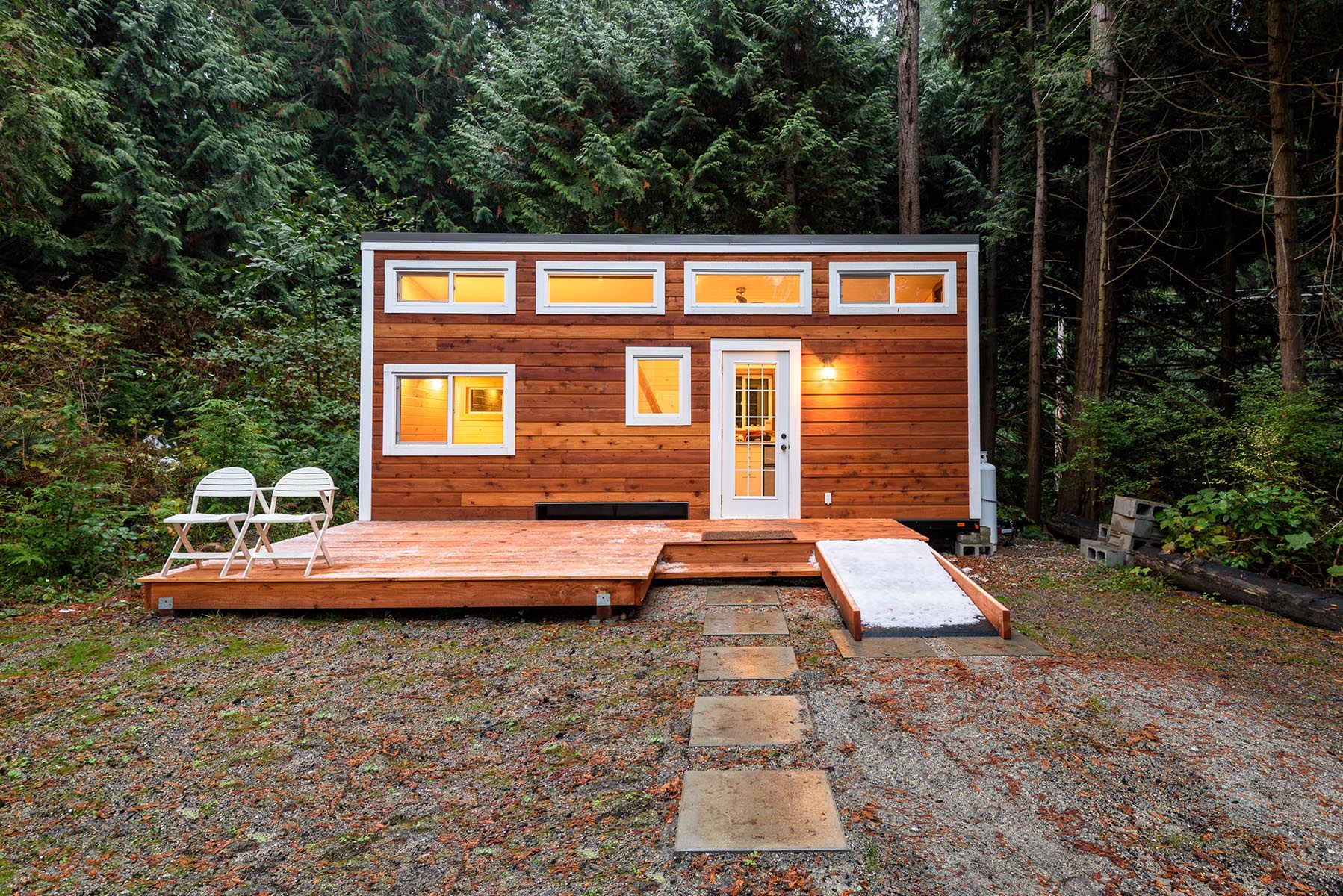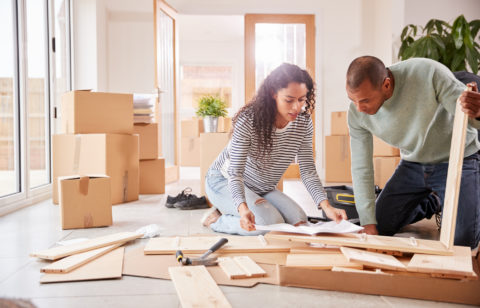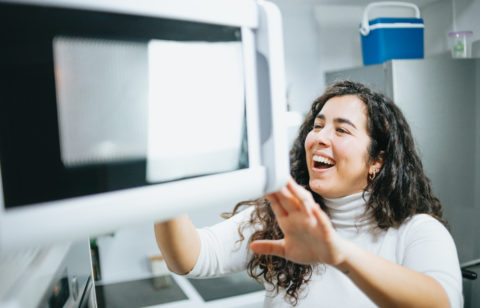Becoming a homeowner is part of the American Dream. However, as housing prices and mortgages continue to rise, that part of the dream becomes more and more out of reach. A mortgage is one of the biggest expenses in life. Depending upon the terms of the loan, you will have likely paid twice the original cost of the house by the time it is paid off. The alternative of renting for years with nothing to show for it in the end is not the ideal choice either.
Did you know that you can purchase a home without breaking the bank? Tiny houses became popular during the Great Recession in 2007 as families looked for new ways to save money. They remain a trend in minimalist living because it enables people to live in more expensive areas where a full-size house would price them out of the market.
Tiny houses may be small, generally between 100 and 400 square feet, but they are designed to accommodate what you need with all the necessities packed into imaginative multi-use spaces. Their options include having wheels or being built on a trailer to travel from place to place. Or they can be a permanent fixture placed on a concrete slab after you rent or purchase the land.
The money you can save with a tiny house varies depending upon location, the construction materials used, how it is heated and cooled, luxurious extras and more.
The costs of a tiny house
How handy are you with a hammer? Tiny houses can be built for as little as $8,000 if you are a DIY type of person. But the average cost to purchase one that is fully built can range from $30,000 to $60,000, according to HomeAdvisor. This is far from the average cost for a traditional home, which is around $279,859. However, if you look at the cost per square foot, an average house costs $150 per square foot. Tiny houses are much more expensive, averaging $300+ per square foot.
When you buy a home, the land is normally included. Tiny houses don’t usually come with land, so that is an additional cost. There is a way around this, though. Since tiny homes take up such little space, many owners will work out a deal with a landowner to live on their property. This works best with tiny homes that are mobile. Being mobile offers many advantages by enabling you to explore and experience places around the country. For instance, you could enjoy a view of the grand Tetons one year and live near the beach the following year.
Since tiny homes cost much less to build than traditional ones, people can afford to use high-quality building materials and don’t need to cut corners. Appliances for tiny homes may be smaller, but they are not necessarily cheaper. Even so, you will pay much less to build, furnish, purchase or rent land and add the extras you want to your home.
Taxes and insurance
Both homeowners’ insurance and property taxes are based on the value of your home. A $50,000 home is obviously going to cost much less than a $200,000 home. Tiny homes made to be mobile can be considered RVs. These non-permanent structures wouldn’t be taxed at the same rate as permanent housing, which works in your favor. It is best to check the rules and regulations regarding tiny houses in your jurisdiction.
Utilities
Smaller homes tend to be more energy efficient since there is less space to heat or cool. Additionally, alternative types of energy are often used in tiny houses, such as solar panels. Propane is also a good choice for heating and cooking because it is often cheaper than natural gas and can be set up with aboveground tanks. For those who are green, tiny homes often have composting toilets instead of a connection to a sewer line. In fact, tiny houses make it easy to live off the grid, if that is your goal.
Considerations when buying a tiny house
Let’s be clear; it’s not going to be easy. Living small requires a ton of concessions on your part.
Downsizing
f you own a lot of things, moving into a tiny home will require a lot of downsizing. To live comfortably in such a small place, you will need to strip your possessions down to the bare minimum. Rethink your life and consider the material things you have accumulated along the way. What do you need to live? What do you need to remain happy?
The items you purge can bring you money to help pay for your new home. Have a yard sale or sell them on eBay or Letgo. If you are not someone who can let things go, you may have to include the cost of renting a storage unit when calculating costs.
Laundry
Most tiny homes don’t have enough space to house a washer and a dryer, so there is the added expense and burden of dragging your clothes to the laundromat. If you don’t mind living off the land, you can handwash your clothes one week and take a trip to the laundromat the following week. You can also make the most of your laundry trip by simultaneously taking care of other chores that are located nearby.
Food
You won’t have enough room to store a lot of excess food, which means more frequent trips to the grocery store. That membership card to the buy-in-bulk store will become obsolete. On the upside, you will have storage in your kitchen to store non-perishables.
Possessions
To live in a tiny house, you will have to embrace a minimalist lifestyle. Even if you put your things in storage, you will be living with mainly the necessities. If that includes a closet full of shoes or a large collection of ceramic figurines, tiny house living may not fit your expectations—or your collection.
Mortgage
Saving money on a mortgage is one of the biggest draws to tiny house living. A whopping 68% of all tiny house homeowners have no mortgage, compared to 29% of the rest of homeowners. However, it can be difficult for you to qualify for a mortgage with a tiny home. You may have to obtain a personal loan or pay in cash.
Resale
Some people say that tiny houses are a trend, which could mean the resale value won’t hold up over the next decade. Others point out its popularity, which hasn’t waned for decades. Given the higher cost of living, tiny homes should remain in demand for the near future.
Zoning regulations
Regulations can be tricky for tiny houses. Depending upon the municipality, there may be hefty fees involved.
No garage
You will have to come up with creative storage solutions for things such as rakes, your lawnmower, and other yard equipment. Your car won’t be protected from the elements, but you can always use a car cover.
Little room for others
If you are someone who likes to entertain, a tiny house might not be the ideal choice. But in areas where it is warm year-round, the outside space can be used for entertaining. If you live in a beautiful location, the background can enhance the experience for guests.
Conclusion
There is little doubt that living in a tiny house will save you money. In fact, 58% of people who live in tiny houses have about $11,200 more saved in the bank than the average American and 65% of them have no credit card debt. Living in a tiny home will dictate your spending habits because when you lack storage room, you are less apt to overspend.
People who live the tiny home life swear by its convenience and savings. It might not be appealing for the masses, but it is an economic idea that has a long way to go.
In short: While living in a tiny home can be solely about saving money, it can also be a way to de-clutter your life and your mind. Without all that stuff, life can be simpler and less stressful.







